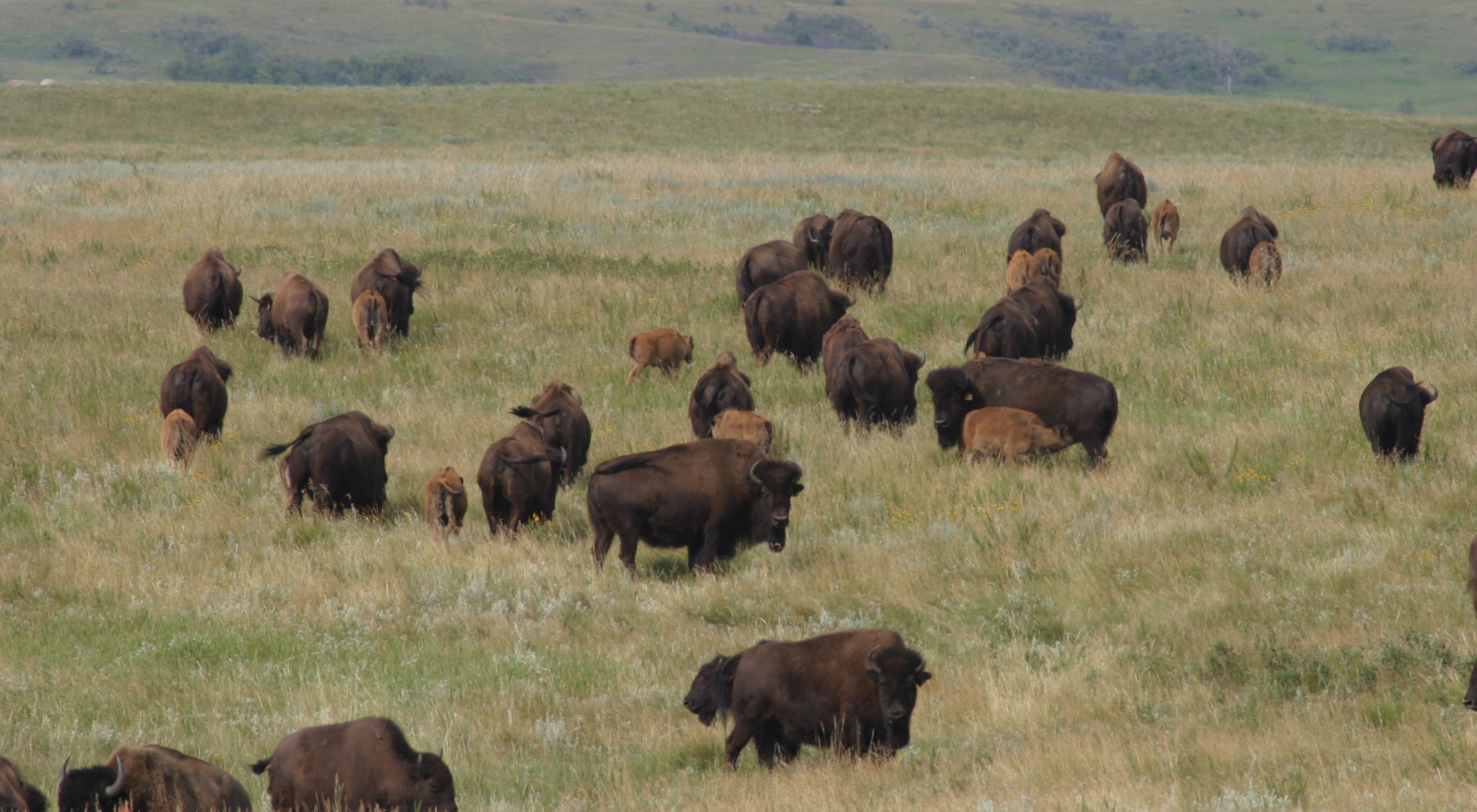When settlers arrived on North America’s Great Plains, they encountered tens of millions of bison (often called buffalo). By the end of the nineteenth century, less than 1,000 remained. The bison has since been saved, but it no longer is a keystone species shaping America’s grasslands.
The Nature Conservancy is putting bison back on the prairie, restoring its ecological role on select preserves in the Great Plains.
Almost three decades ago, the Conservancy established its first herd of bison at the Samuel H. Ordway, Jr. Memorial Preserve, a 7,800-acre expanse of prairie that is the Conservancy’s largest preserve in South Dakota. Originally started with just 18 animals, the herd has now grown to 300 bison.
Mary Miller, Ordway’s manager, says bison are good for prairie. “They graze all year, even in winter, and focus on grasses, allowing wildflowers to thrive. The result is a varied grassland that is good for more kinds of butterflies, pollinating insects and grassland-nesting birds. Biodiversity is enhanced.”
Because bison move constantly, they graze specific areas intensely but for short periods. Controlled fires that stimulate new native grass and plants can be used to direct their movements. This technique is called patch-burn grazing, and it can be used to rotate cattle, which are also beneficial to maintaining healthy grasslands.
But bison aren’t cattle. They are difficult to handle. “The more you try to force them to do something they don’t want to do, the more they push back,” says Miller. The Ordway bison are handled minimally: once a year, the animals are brought in to be checked and those that will be sold are removed from the herd.
Eric Rosenquist, manager at the Conservancy’s Cross Ranch in North Dakota, agrees with Miller that bison are good for the prairie. Bison have been at Cross Ranch for nearly 30 years; they are the Conservancy’s second herd.
“Prairies need disturbance, like the disturbance created by fires and by bison,” says Rosenquist. “Both prevent the build-up of a litter layer beneath the grass that can shelter invasive, non-native species. Bison graze the grasses that contribute to the litter and also create open areas in their wallows or by trampling the ground that become good locations for the seeds of new prairie plants to germinate.”
Rosenquist is also impressed by how well-adapted bison are to their environment. “They are resilient. They can withstand both the heat of summer and the freezing cold of winter. They even seem comfortable in the two feet of snow and 40-below temperatures of the ranch in January.”
“There are just four things bison need: food, water, other bison and room to roam,” says Rosenquist, who has been helping the Conservancy bring bison back to other grassland landscapes.
Bison herds established by the Conservancy in recent years can be traced back to Wind Cave National Park in South Dakota. The Wind Cave herd is a genetically valuable “gene bank.” Because bison were nearly exterminated (all bison today are descendants from relatively few animals), the species has passed through a genetic bottleneck. But the animals at Wind Cave have lost less of that genetic diversity than most herds. They also have few, if any, cattle genes.
At the privately-owned Lame Johnny Creek Ranch in South Dakota, the Conservancy holds and manages a conservation easement as well as a small herd of bison that came from Wind Cave. Due to its size and available forage, Wind Cave National Park can only sustain a herd of about 500 animals within the park’s boundary. In order to preserve the rare genetics of the herd, however, scientists recommend having a total population of more than 1,000 animals.
In order to reach this goal, Wind Cave and the Conservancy partnered to create satellite herds composed solely of the Wind Cave genetics. Through this partnership, the Lame Johnny Creek bison have been used to help create new bison herds throughout the Great Plains. These satellite herds can now be found at the Conservancy’s Dunn Ranch Prairie in northwest Missouri, Broken Kettle Grasslands Preserve in Iowa, Tallgrass Prairie National Preserve in Kansas, and most recently, at Nachusa Grasslands in Illinois.
